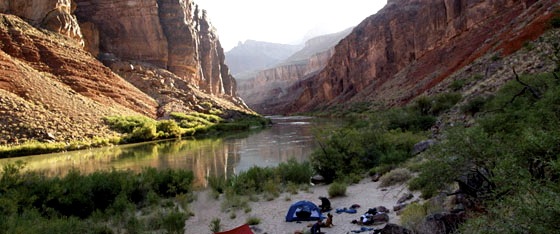
| Route 66 | Cities | Beaches |
 |
Granite Rapids |
Escalante |
Beamer |
Boulder Spring |
The Grand Canyon is one of the three greatest backpacking locations in North America, matched only by the Wind River Wilderness and Glacier National Park. You can mix and match trails in a lifetime of different trips. There are beginner, intermediate and advanced routes. You quickly leave the crowds behind and spend your weekend, week or two weeks in isolation. Every trail is spectacular and a photographer's fantasy. You'll see wildlife ranging from lizards and scorpions scampering at your feet to Bighorn Sheep bounding up and down the cliffs and feral mules wandering around on the plateaus. Assuming you took our advice and began by hiking several of the day trails, you'll already be familiar with the first halves of all these routes. But carrying a backpack and staying overnight allows you to get to the bottom of the trails, down on the Tonto Plateau or on sandbars along the Colorado River. |
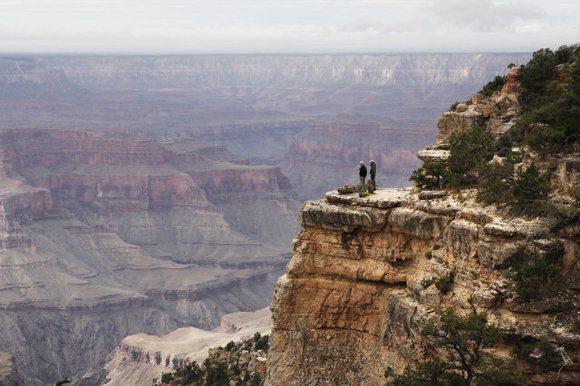 |
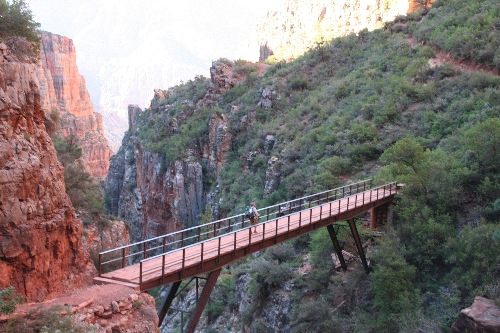 |
Your biggest problem backpacking the Canyon is Water. There are a very few streams and springs where you can sometimes get it. Obviously, you can get it from the Colorado River, but you have to strain it or let it settle out before purifying it, because the river carries such a heavy sediment load it would destroy your filters. And there are only a few places where trails get down to the river. So hauling Water becomes a challenge. Backpackers use various strategies. Some lug gallon milk jugs scrubbed out, sterilized and left to air out. Some cache water at key points along the way so they only have to haul one or two jugs at a time. Some plan their trips so they keep crisscrossing back and forth through the same few river access points. However you decide to do it, you'll need to give this issue lots of thought while planning your trip. When you do find a stream, remember all water in the canyon carries Giardia Lambdia and must be purified. |
| Permits are your second biggest problem. You don't need permits to day hike below the Rim, but you do need them for backpacking. The entire park is divided into sectors and backcountry managers spread out the permits to control the density of backpackers in each sector each night. This is a worldwide backpacking destination, so competition is intense for each permit. You have to apply as much as a year in advance to be assured of getting the exact route you want. The more in your group the more difficult it will be to acquire the permits. Seven is the maximum size allowed. Groups of 5-7 are guaranteed to have trouble and may have to slide dates back and forth to get the route they want. Groups of 3-4 have a better chance but should still expect difficulty. Two people can usually get their desired route as long as they apply in advance. Single backpackers rarely have trouble. By "in advance" we mean at least several months. Of course, the Summer months of June, July and August are where the major crush occurs. If you can come in April, May, September or October you'll have a much easier time, and in the Winter months you'll have no trouble at all. But of course in Winter the Canyon trails are covered with ice and snow and are often impassable, so unless you're bringing an ice axe and crampons and know how to use them this is not much help. | 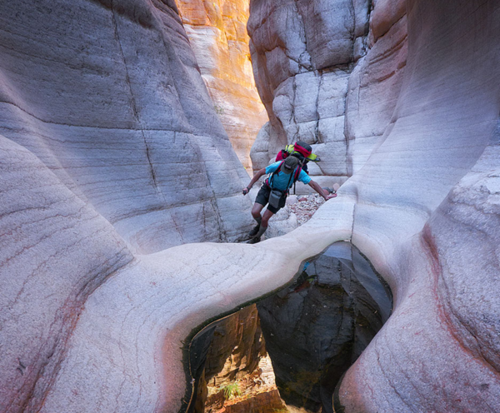 |
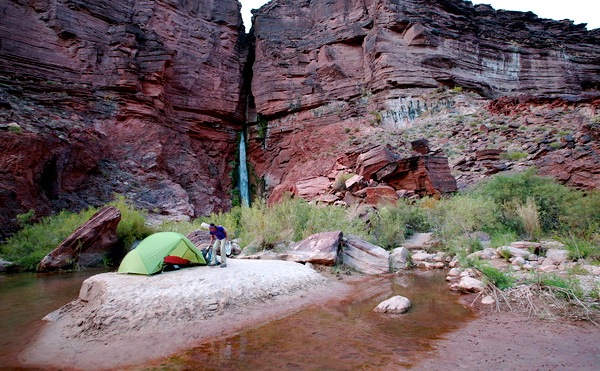 |
Our final piece of advice concerns packs. We know all the arguments in favor of internal frame packs. But unless you're doing the New Hance or Tanner Trails (on which you'll be scrambling quite often), you need an external frame pack. If you hike these other trails with an internal frame pack your back will be soaked with sweat during your entire trip. The external frame puts air between your back and the mesh panel. External frame pack bags also have more pockets and allow you to place more items in easily accessible places. |
Your application should be postmarked the first day of the month four months before your trip. For a June camping trip, your application cannot be postmarked prior to February 1; for a July trip it cannot be postmarked prior to March 1. There will be a $25 fee per trip. The application form can be obtained online. You cannot submit it electronically; mail is required. Your permit must be prominently displayed on your backpack. There are Rangers who spend their days backpacking the park checking for permits. Remember that unless you're an experienced, hard core backpacker with prior trips in the Canyon, we never recommend starting a backpacking trip as soon as you arrive. You should hike one or two of the Rim trails while you adjust to the altitude, heat, and lack of humidity. You also need to stretch your leg muscles after a drive of several days. |
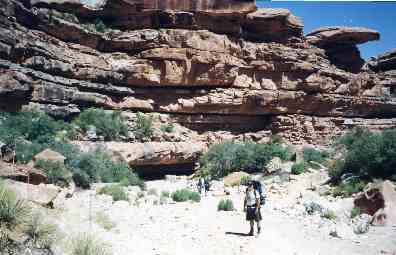 |
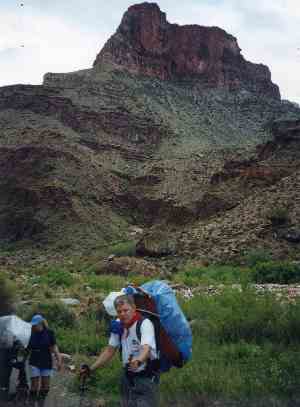 |
There are probably 100 good backpacking routes in the Canyon, all mixing and matching various shorter trails. We list only the ones we recommend for beginners and intermediates. If you're an experienced, hard core backpacker ready to bring a four wheel drive jeep, navigate the old fire road for 20 miles, pack down the South Bass Trail, and follow the plateau West to the Havasu village of Supai, then you don't need our advice and are probably not on this site looking for it. We've arranged the trails in the menu bar not alphabetically but in order of experience / difficulty. Notice in the photo to the left here we have rain covers on our packs. We got caught in an afternoon shower on the North Kaibab Trail. |
|
|||
|